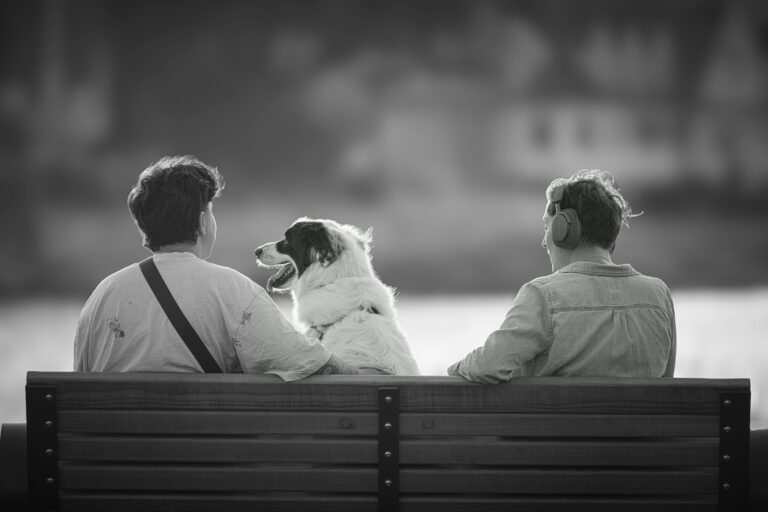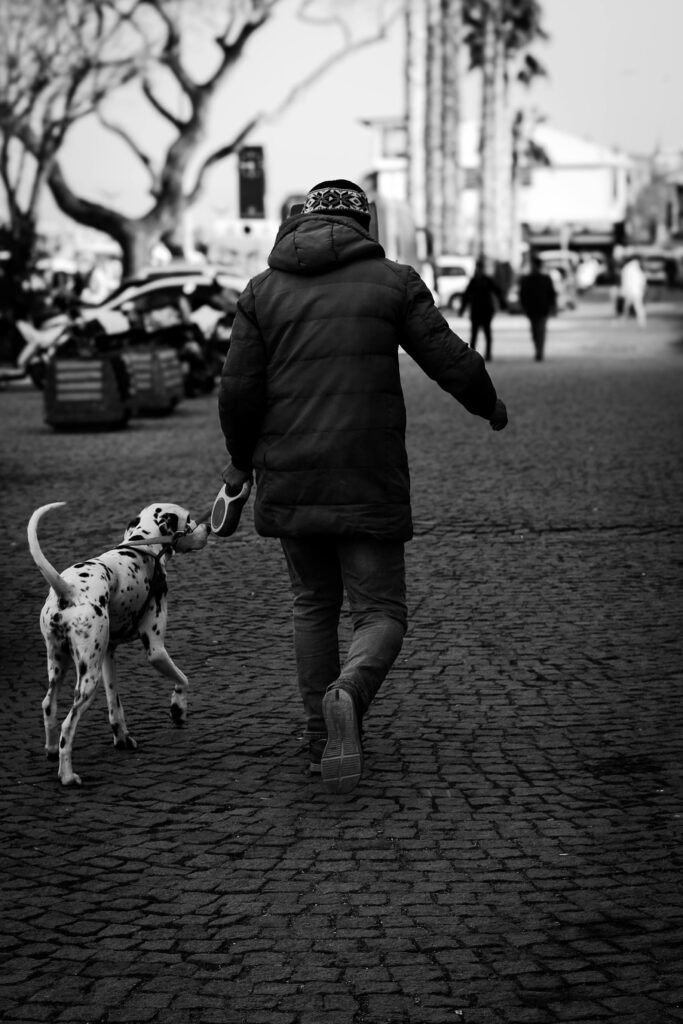Dog parks are just one slice of the socialization pie. True, real-world socialization means preparing your dog to behave confidently and calmly in everyday environments: on busy sidewalks, at patio cafes, during neighborhood events, or around strollers and bicycles. In New Jersey, where we’re lucky to have so many dog-friendly destinations, the opportunities for effective social exposure are everywhere. But if your dog lacks proper training, those situations can quickly become overwhelming or chaotic.
As professional trainers, we work with dogs at all stages of social development. Whether your pup is brand new to these settings or you’re trying to fix reactivity or fear, we’ll walk you through how to introduce your dog to real-life situations without stress.
What Is Real-World Socialization?
Socialization is more than just exposure. It’s about helping your dog learn how to cope with new experiences, not just endure them.
Real-world socialization includes:
- Navigating crowded sidewalks
- Settling under a table at a cafe
- Meeting strangers calmly
- Ignoring distractions like joggers, bikes, or children
- Remaining focused despite loud noises or unfamiliar surfaces
Dogs that are well-socialized in the real world are less anxious, more obedient, and easier to manage in public. They’re the dogs you see calmly laying under a restaurant table or walking through a crowd without barking or pulling.
Start Small and Build Gradually
If your dog is new to social settings, don’t start by walking into a loud street festival. Ease them into new experiences gradually.
Here’s a progressive approach to help your dog build confidence:
- Backyard work with mild distractions (neighbors, cars, birds)
- Quiet parking lots to practice obedience around people and cars
- Local parks during off-peak hours
- Outdoor cafes with ample space between tables
- Public events or busier environments once your dog is fully responsive on leash
Always monitor your dog’s body language. Flattened ears, tucked tails, or excessive panting are signs they may need a break.
The Role of Obedience in Public Spaces
A well-socialized dog is also a well-trained dog. Obedience gives your dog structure and something to focus on instead of reacting to every sight or sound.
Key commands to practice in real-world settings:
- Heel: Keeps your dog walking calmly at your side
- Place: Encourages stillness at your feet during meals or chats
- Leave it: Helps redirect attention from dropped food, other dogs, or tempting distractions
- Down-stay: Promotes calm posture and patience
- Recall: A must for safety, especially in open parks or events
If your dog lacks focus or struggles with leash behavior, our Basic Obedience Program is a strong starting point. It’s designed to create responsiveness and reliability, even around distractions.
Create Positive Associations
Real-world socialization should feel safe and rewarding. Always bring high-value treats when exposing your dog to a new place.
Here’s how to make outings productive:
- Reward calm behavior often, especially when your dog chooses to ignore distractions
- Ask for a simple command like “sit” before letting them greet a stranger
- Offer food rewards for eye contact, loose leash walking, and calm postures
- End sessions on a positive note before your dog becomes tired or overwhelmed
If your dog struggles in specific settings (like cafes or sidewalks), don’t push through. Work under threshold and build up gradually.
For families tackling social outings with more than one dog, read our post on how to manage multi-dog dynamics during summer activities for helpful strategies.
Common Socialization Mistakes to Avoid
Socialization can backfire if done incorrectly. Be sure to avoid these pitfalls:
- Flooding: Throwing your dog into high-stress settings without preparation
- Inconsistent rules: Letting your dog bark or pull in public can lead to embarrassment and stress
- Off-leash exposure in unsafe areas: Always keep your dog leashed unless in a secure, fenced area
- Letting strangers overwhelm your dog: Politely ask people to give your dog space if needed
Socialization Practice Makes Progress
Just like people, dogs learn by repetition and experience. The more calm and controlled exposures they get, the more comfortable and obedient they become.
Here are a few practice drills you can try:
- Visit a dog-friendly hardware store to practice commands in aisles
- Walk through downtown early in the morning when it’s quieter
- Eat outside at a cafe with your dog on place while you enjoy a meal
- Sit on a park bench and reward calm behavior as dogs or joggers pass by
For additional ideas on how to build skills outside traditional environments, check out this AKC guide to training classes and real-world exposure.
When to Seek Professional Help
Some dogs struggle due to fear, reactivity, or underdeveloped social skills. If your dog barks, lunges, hides, or shows anxiety in public spaces, it doesn’t mean they’re “bad.” It means they need a structured, confidence-building approach.
We work with dogs every day who can’t handle busy areas initially. With the right strategies, even nervous or reactive dogs can learn to stay calm and composed in social settings.
Our Basic & Advanced Obedience Program provides personalized, real-world training for dogs of all experience levels. Whether you’re preparing for a beach boardwalk, brewery patio, or bustling festival, we help your dog learn how to navigate public life with confidence.
Final Thoughts
Real-world socialization is one of the greatest gifts you can give your dog. It creates freedom, builds trust, and enhances your bond. The more places you can bring your dog without worry, the more life you get to enjoy together.
Start small, stay patient, and remember that consistent practice is what turns potential into confidence.
Want your dog to join you in more places without stress? Contact us today and let’s build those real-world skills together.


